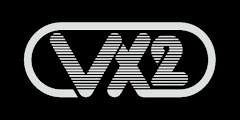I'm back! Let's return to the subject of blowing up giant robots and speeding up combat in Rifts (and other Palladium games), shall we?
Earlier, I complained that in Rifts, power armor, robots, and other big armored things take too long to kill. I was thinking the other day that Dungeons & Dragons 4E had a similar problem, in that combat simply took forever, especially when fighting a big "boss" monster with tons of hit points. I didn't come here today to trash D&D 4E -- in fact, if you look back at some of the earliest posts on this very blog, you'll find some 4E content. But I will say that once we wrapped up our 4E campaign, it was the prospect of more lengthy combats that put the game on permanent hiatus for my group.
The "D&D in all but name" roleplaying game 13th Age isn't always my cup of tea, but it does some interesting things with its 4E-esque system. One of the best (and most easily stolen) ideas is the Escalation Die. The idea is basically that you put a big D6 on the table after the first combat round, with the "1" facing up, and turn it to the next highest number each round after that. The number that is facing up is added to attack rolls (and maybe damage, I can't remember). Oh, and there are some special abilities that are only triggered when the Escalation Die reaches a certain number, too.
I like this idea. It's simple and fun. Just taking it and plopping it into the Palladium system would be easy enough, but I feel like that wouldn't make a big enough difference. For one thing, most characters already have a pretty easy time hitting their opponents -- it's just that the opponents have a good chance of blocking or avoiding the attack with a parry or dodge. The problem isn't hitting stuff as much as making it fall down.
So, I propose making the Palladium Escalation Die a D10, and having it add strictly to damage. Also, the value on the die should be multiplied by 10, so you do +10 damage on the second round, +20 on the third, etc. (This means that those "tens place" percentile dice would work well.) I'm not sure what to do if your fight takes more than 10 combat rounds (where you're shelling out 100 extra damage on a successful attack). I'd advocate either keeping it at +100 until the fight ends or continuing to escalate (time to break out the D30?) because let's face it, by that point, with the number of attacks Rifts characters have, you will probably want that fight to be over ASAP.
Still pretty simple, right? I feel like this might speed combat up in a straightforward, easy-to-handle way, and might even bring out more of the sense of mayhem and "death, destruction, or worse" that I want from Rifts. I hope I will get a chance to try it out sometime.
Friday, June 6, 2014
Subscribe to:
Post Comments (Atom)




We used the old Robotech optional mecha damage tables whenever they got hit with criticals, max hand to hand, or over 1/2 MD of the mecha part. Worked like a charm - players were always spending cash on fixing their mech (I believe the rules were in the RDF accelerated training supplement), and towards the end of the campaign avoided mech combat unless absolutely necessary.
ReplyDeleteI forgot about the RDF Accelerated Training Program book until you just mentioned it. That was a weird book. I'll have to see if my friend still has it and give it another look.
DeleteI don't mind critical damage tables, but they are a bit fiddly. I'm looking for a quick, simple fix that will speed things up. It might not work well -- I actually expect it to not operate as well as I hope it will -- but I still want to give it a spin and see what happens.